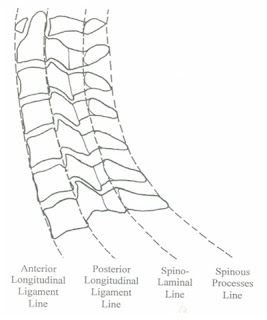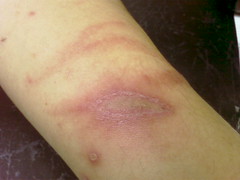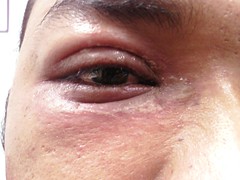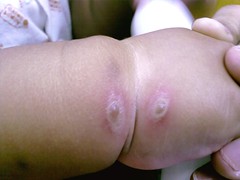Saturday, September 29, 2012
Sunday, September 23, 2012
Saturday, September 22, 2012
Saturday, September 8, 2012
Anticoagulation Reversal
WARFARIN
If your patient IS NOT Bleeding: Goal is INR in 2-3 range
INR Action
3-4.5 Hold dose until INR decreased
4.5-10 1.25 mg Vitamin K PO and hold dose until INR decreased
>10 2.5 - 5 mg Vitamin K PO hold dose until INR decreased OR
If high bleeding risk, Give 1mg IV Vitamin K and consider FFP
If your patient IS bleeding but not about to die: Goal is INR under 2
Should see INR back in therapeutic range in 24 hours
INR Action
2-4.5 2.5 mg Vitamin K ± FFP (15 ml/kg)
4.5-10 5 mg Vitamin K ± FFP (15 ml/kg)
>10 5-10 mg Vitamin K ±FFP (15 ml/kg)
Whether to give FFP or PCC in this scenario is based on clinician judgment. There is no hard data to show superiority or inferiority of either product. PCC will reverse faster and with less volume.
FFP=fresh frozen plasma PCC=Prothrombin complex concentrate
If your patient has LIFE THREATENING OR BRAIN BLEEDING:
There are several choices in this scenario
1. Prothrombin complex concentrate 4,000 units IV + rVIIa 1mg IV
2. Prothrombin complex concentrate 4,000 units IV + 1 unit of FFP
3. 4 units of FFP if PCC is not available
Q: What's in Prothrombin Complex Concentrate?
A: There are 2 basic types of PCC: Four factor, which has 2,7,9,10 and 3 factor, which lacks factor 7. As of the date of this publication, the United States only has three factor PCC. Three factor PCC will probably correct hemostasis but does not improve INR because it has no factor 7. So to replace all of the vitamin K factors, we need to add factor 7. This can be done either by giving a unit of recombinant factor VIIa (rVIIa) or a unit of FFP. Factor VII is faster to give but expensive and may carry thrombotic risk. Does adding rVIIa or a unit of FFP make a difference in clinical outcome? Unknown.
Q: Has there been a definitive trial to say PCC is better than FFP?
A: There have been no outcome trials. We know that PCC will reverse anticoagulation faster, and have taken this to mean that it will make bleeding stop sooner and improve patient outcome. But whether faster reversal actually translates to an improved outcome is unknown.
Q: Who should get PCC and who should get FFP?A: Any answer is going to be arbitrary and it’s mostly a matter of, “Do you have a few hours or do you need anticoagulation now?” It’s based on clinical judgement. PCC will make reversal happen much more quickly but may have a higher thromboembolic (TE) risk. There isn’t much data on the safety profile of PCC, but there is a small yet quantifiable TE risk. A recent meta-analysis found 1.8% risk of TE for 4 factor PCC and 0.7% for 3 factor PCC.
Q: Say you have someone who is having a life threatening bleed. What’s going to be the difference between giving 1mg and 10mg of vitamin K?The response to vitamin K is as variable as response to warfarin - meaning it’s not an exact science. Why 10mg rather than 1 mg? One mg of vitamin K will get patients back to therapeutic INR, but that’s not what we want in a life threatening bleed. Full reversal probably happens around 2-2.5 mg of vitamin K. Humans are variable in their response to vitamin K and the 10 mg dose is somewhat arbitrary. Some places give 5mg, others give 10mg. If you are in a situation where you do not want want to skimp on reversal, 10mg will fully reverse warfarin anticoagulation. But could you be faulted for giving 5mg? No. It is more a matter of making absolutely sure there is going to be full reversal, no questions asked. My recommendation, in life threatening bleeding, which more often than not is an intracranial bleed, give 10mg IV over 1 hour.
ANTIPLATELET AGENTS
Aspirin
Minor – desmopressin 0.3 mcg/kg x 1 Major - platelet transfusion (1 unit or 6pack)
Clopidogrel (Plavix®)
Minor – desmopressin 0.3 mcg/kg x 1 Major - platelet transfusion – consider two units if life or brain threatening bleeding
Prasugrel (Effient®)
Minor – desmopressin 0.3 mcg/kg x 1 Major - platelet transfusion – consider two units if life or brain threatening bleeding
Ticagrelor (Brilinta®)
Minor – desmopressin 0.3 mcg/kg x 1 Major - platelet transfusion – consider two units if life or brain threatening bleeding
Sustained Release Aspirin/Dipyridamole (Aggrenox®)
Minor – desmopressin 0.3 mcg/kg x 1 Major - platelet transfusion (1 unit or 6pack)
Abciximab (Reopro®)
Major - platelet transfusion
Eptifibatide (Integrilin®)
Minor – desmopressin 0.3 mcg/kg x 1 Major: platelet transfusions plus infusion of 10 units of cryoprecipitate
Tirofiban (Aggrastat®)
Minor – desmopressin 0.3 mcg/kg x 1 Major: platelet transfusions plus infusion of 10 units of cryoprecipitate
HEPARIN AND HEPARIN LIKE AGENTS
Reversal Agent = Protamine. Protamine infusion rate should not exceed 5 mg/min. Maximum dose is 50 mg per dose.
Unfractionated (standard) Heparin
| Time since last heparin dose | Dose of Protamine |
| < 30 minutes | 1 unit/100 units of heparin |
| 30-60 minutes | 0.5 - 0.75 units/100 units of heparin |
| 60-120 minutes | 0.375 - 0.5 units/100 units of heparin |
| > 120 minutes | 0.25 - 0.375 units/100 units of heparin |
Low Molecular Weight Heparin
Reversal of Bleeding: Protamine will give partial reversal of LMWH (probably about 70%, which is less than protamine reverses unfractionated heparin, but still better than nothing) . If protamine is given within 4 hours of LMWH dose, give 1 mg of protamine for each 1 mg of enoxaparin or 100 units of daltaparin and tinzaparin. Repeat one-half dose of protamine in 4 hours. If 4-8 hours after dose, give 0.5 mg for each 1 mg of enoxaparin or 100 units of daltaparin and tinzaparin
Fondaparinux (Arixtra®)
Major Bleeding Reversal - Protamine ineffective - rVIIa (90 mcg/kg) may be of use
Dabigatran (Pradaxa®)
Reverse if patient shows signs of bleeding and had an elevated aPTT > 40 seconds
Profilnine (Factor IX complex) 4000 units (50 units/kg for patients under 80 kg) plus 1 mg of rfVIIa
Rivaroxaban (Xarelto®)
Reverse if patient shows signs of bleeding and has an INR > 1.5
Profilnine (Factor IX complex) 4000 units (50 units/kg for patients under 80 kg) plus 1 mg of rfVIIa
THROMBOLYTICS
The goal is to rebuild the entire clotting system
1 unit of pheresis platelets
2 units of FFP
10 units of cryoprecipitate
Definition of Bleeding
Minor bleeding – Any clinically overt sign of hemorrhage (including imaging) that is associated with a <5 15="15" anticoagulation="anticoagulation" be="be" by="by" clinician="clinician" concentration="concentration" decrease="decrease" dl="dl" felt="felt" g="g" hematocrit="hematocrit" hemoglobin="hemoglobin" in="in" or="or" p="p" related="related" the="the" to="to">
Read more...
Major bleeding – Intracranial hemorrhage or a ≥5 g/dl decrease in the hemoglobin concentration or a ≥15% absolute decrease in the hematocrit resulting in hemodynamic compromise or compression of a vital structure and felt by the clinician to be related to anticoagulation
Source:http://ercast.libsyn.com/
Labels:
Antocoagulation
Amal Mattu on EKGs: ST elevation, Wide Complex Tachycardia and PE
Source:http://ercast.libsyn.com/
Emergency cardiology master Dr. Amal Mattu gives the low down on ST elevation, T-wave inversion and bizarre, wide-complex tachycardia.
Basic Rules of ST elevation
1. No matter how good the rules, nothing is 100% certain
2. 15-20% of STEMI cases sent to the cath lab will have clean coronaries
3. Always obtain and OLD EKG if possible
4. Positional and pleuritic chest pain is present in 15% of True ACS
A Stepwise approach to distinguishing pericarditis vs STEMI vs Early Repolarization
Disclaimer-This process is not 100% but will pick up the majority of MI.
The first part of the process is to look for the life threat. In this case, STEMI.
Step 1: Look for findings that clearly define STEMI. When reading the EKG...
- Is there any ST segment depression in the other leads leads (except AVR and V1-nonspecific). These are “reciprocal changes” and strongly suggest STEMI over other causes of ST elevation.
- Look at the ST segment elevation in Leads II and III. If the ST elevation in lead III is greater than in lead II, think STEMI. Early repolarization and pericarditis should not have more ST elevation in lead III compared to lead II.
- Look at the morphology of ST segment elevation. Concave upward (as in a cup holding water) does not rule out STEMI. If morphology is horizontal (tabletop) / convex upward (tombstone), think STEMI.
- Serial EKGs show increasing size of Q waves ( make sure they are new Q waves) = STEMI
Step 2: Look for findings that define pericarditis
PR depression in multiple leads >2mm. But be warned, PR depression is not only seen in pericarditis. It can also be seen in STEMI, so don’t hang your hang your hat on it. PR depression is also transient. It can last from a few hours up to two days and is most associated with viral pericarditis than other types of pericardial inflammation.
Step 3: If there is still a question as to what’s causing the ST elevation...Perform or order an ECHO
Pericarditis-may have fluid. MI-may have wall motion abnormality. Benign early repol will be normal. Unfortunately, pericarditisSerial troponins may help, but what really helps is an old EKG.
Pulmonary Embolism and T-wave inversion
- T- wave inversions are not just caused by cardiac ischemia and, in the setting of PE, may be more prevalent than sinus tachycardia. The most common place to find T wave inversions in PE are leads V1, V2, V3. There is no mystery as to why it should be these leads - a large PE can cause acute pulmonary hypertension which will be seen as changes in the anteroseptal leads.
- If you see new T-wave inversions in anterior septal leads V1, V2, V3 and the inferior leads(II, III and AVF), that equals new pulmonary hypertension and your suspicion of PE should be even higher -this is a PE until proven otherwise.
- The classic teaching is that most PEs will present with sinus tachycardia, but in the large studies, it’s only found in 30-50% of confirmed cases of PE. Respiratory rate and history are better predictors of PE than sinus tachycardia.
Hyperkalemia and its effect on EKGs
Amal’s Axioms
- A bizarre, wide complex, EKG equals hyperkalemia until proven otherwise. Think of hyperkalemia as the EKG’s great imitator- the syphilis of electrocardiography. Hyperkalemia produces widening of the QRS and, as the K level goes up, the p waves start to disappear. The EKG in this setting can resemble V-tach, ST segment elevation, fascicular blocks. Hyperkalemia can do pretty much anything to an EKG.
- Ask yourself, is the wide complex rhythm over 120bpm? To be diagnosed as ventricular tachycardia, the rate should be over 120 unless the patient is already on an antidysrhythmic like amiodarone.
- If your patient has a wide complex rhythm that you can’t figure out, but think there may be hyperkalemia, there is little risk in giving a few amps of bicarb (1-2 amps as a trial- bicarb is quickly eliminated by the body) or calcium ( 1-2 amps of gluconate is safe even in dig toxicity).
- A sodium channel blocker overdose (e.g. tricyclic antidepressant or cocaine) can also cause a wide complex, bizarre EKG. If a patient has hyperkalemia, a tricyclic antidepressant or cocaine overdose, do not use an antidysrhythmic like amiodarone or procainamide -they will potentiate the toxic effect. The sodium channels are already poisoned and amiodarone/procainamide will just make things worse.
Interview with Amal Mattu
By Rob Orman
Written summary by Justin Arambasick, Rob Orman
Read more...
By Rob Orman
Written summary by Justin Arambasick, Rob Orman
Labels:
ECG
New 2012 Berlin Definition for ARDS
According to the previous definition published in 1994 by the American-European Consensus Conference (AECC), ARDS must have the following 4 criteria:
- the onset must be acute
- there must be hypoxemia with PaO2/FIO2 ratio ≤ 200
- there must be bilateral infiltrates on CXR
- these findings cannot be attributed to other causes
However, a number of problems are found with the 1994 definition, including:
- term 'acute' was not defined (i.e., how "acute" is acute)
- the category of ratio PaO2/FIO2 between 201-300 is confusing (PaO2/FIO2 ≤ 300 is ALI, PaO2/FIO2 ≤ 200 is ARDS, PaO2/FIO2 between 201 - 300 ?ALI/ARDS)
- CXR interpretation has poor inter-observer reliability
With this, the new Berlin 2012 definition of ARDS is published with the following changes:
- the category of acute lung injury (ALI) with PaO2/FIO2 ≤ 300 is REMOVED
- instead, ARDS is now divided into three categories based on severity of hypoxemia
- PaO2/FIO2 between 200–300 is defined as mild
- PaO2/FIO2 between 101 - 199 is defined as moderate
- PaO2/FIO2 of less than 100 is defined as severe
- The term 'acute' now has a specified time frame of symptoms developing within ONE week of a known clinical insult
- Other changes:
- the CXR criteria is now more defined with the added phrase "bilateral opacities - not fully explained by effusions, lobar/lung collapse, or nodules"
- PCWP reading is no longer required as part of the diagnosis as this is increasingly not used. Instead, this new definition requires that the respiratory failure cannot be explained fully by cardiac failure or volume overload.
Editorial comment in JAMA June 2012 points out that this new definition only improves its predictive value of mortality slightly; however, the clarity of the criteria is significantly improved.
Ref:The ARDS Definition Task Force. Acute respiratory distress syndrome: The Berlin definition. JAMA 2012 Jun 20; 307:2526
Abstract: http://jama.jamanetwork.com/article.aspx?articleid=1160659
Labels:
ARDS
MNEMONIC FOR PRIMARY SURVEY DURING TRAUMA
MNEMONIC FOR PRIMARY SURVEY DURING TRAUMA
During Primary Survey, we need to detect the life threatening condition, so call "LETHAL SIX". These life threatening conditions are "clinical diagnosis" and require prompt management by managing team.Mnemonic ATOMFC.
Read more...
- A - AIRWAY OBSTRUCTION
- T- TENSION PNEUMOTHORAX
- present of pneumothorax with hemodynamically unstable
- O-OPEN PNEUMOTHORAX
- the chest wound size should be 2/3 of trachea diameter size. Air will travel into path thaht less resistance.
- M-MASSIVE HEMOTHORAX
- the amount of blood 1.5 liter during initial chest tube insertion or 200mls/h
- significant to refer cardiothoracic urgently
- F- FLAIL CHEST
- paradoxical breathing. 3 or more ribs fracture with two points fracture each rib
- C-CARDIAC TAMPONADE
- becks' triad but neither sensitive or specific
CAUSES OF UNEQUAL & PINPOINT PUPILS IN ED
MNEMONIC 'HANTU' (UNEQUAL)
H-HORNER'S SYNDROME/HEAD INJURY
A-ANEURYSM OF POSTERIOR COM A.
N- NORMAL VARIANT (20-25% OF POPULATION)
T- TRAUMATIC MYDRIASIS
U-USED OF MYDRIATIC AGENT
MNEMONIC 'PONTINE' (PINPOINT PUPILS)
P-Pontine Hemorrhage / Phenothiazine / Pilocarpine
O- Organophosphorus poisoning / Opiod poisoning
N-Neostigmine Poisoning
T-Transient
I-Iritis
N-Narcotics drugs e.g. Morphine
E-Elevated temperature / Eye- Horner's syndrome
Read more...
Labels:
Eye
Paederus Dermatitis / Rove Beetle Dermatitis Pictures

The Rove beetle that is increasingly common in Malaysia. Their bodies contain the toxin paederin (hence Paederous dermatitis) that causes burns on human skin whenever they are crushed. Interestingly the beetles were used to burn off warts in the past. It starts off with some erythema/redness and then with patches of ulceration where the beetle has been crushed. These are some pictures I have collected over the past year in my practice.
 The rove beetles are surprisingly small and very easy to miss. Normally they fly into your house via the windows as they are attracted to light at night. They can fly up apartment blocks and are common if you live near a hill or jungle.
The rove beetles are surprisingly small and very easy to miss. Normally they fly into your house via the windows as they are attracted to light at night. They can fly up apartment blocks and are common if you live near a hill or jungle. Another patch on the arm. The dermatitis normally starts off as a redness or erythema of the skin then continues to become ulcerated.
Another patch on the arm. The dermatitis normally starts off as a redness or erythema of the skin then continues to become ulcerated. Rove beetle /Paederous dermatitis is often confused with shingles or herpes zoster as it's appearance can be similar. However the distribution is not along nerve roots.
Rove beetle /Paederous dermatitis is often confused with shingles or herpes zoster as it's appearance can be similar. However the distribution is not along nerve roots.
A Kissing Lesion occurs when the Rove beetle is crushed between a joint flexure causing identicle mirror lesions.
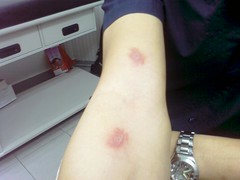
Again most probably a rove beetle crushed in the skin fold of a chubby infant. This produces a mirror image pattern of dermatitis.
More useful info from the SEBERANG PERAI MUNICIPAL COUNCIL.
| Rove Beetle |
| Class : Insecta |
| Order : Coleoptera |
| Family : Staphylinidae |
| Species : Paederus fuscipes Curtis |
| Semut Semai, Semut Kayap, Charlie etc. |
| Estimated 47,000 |
The Rove Beetle is less than 1 cm long. The body is dark orange and the tip of the abdomen, the upper abdomen and the head are black. The upper middle iridescent greenish region of the abdomen are the hard wings (elytra). A pair of transparent wings are neatly folded and hidden under the hard wings. During daytime, the beetle will be seen crawling around swiftly with hidden wings resembling ants. When disturbed it raises the abdomen in a threatening gesture like a scorpion and can fly away. It can also run on water swiftly !
| |||
| Habitat and Feeding Habit | |||
The beetle has been observed in the paddy fields (since 1919), school fields - within the grass etc. It is carnivorous and eats smaller insects. Thus it plays an important role as a biological control of ‘paddy pests’. During heavy rains/ floods, the beetle may migrate to drier areas.
| |||
The haemolymph in the beetle’s entire body (except the wings) contains the most poisonous animal contact toxin in the world called ‘pederin’ (C24 H43 O9 N) named in 1953. It is 12 times more poisonous than cobra venom ! Dried and stored rove beetle for 8 years still retained it’s toxicity ! Contact collision with the beetle while travelling or sleeping, crushing it on the body orsmearing with soiled fingers can cause conjunctivitis and severe dermatitis known as dermatitis linearis, paederus (rove beetle /staphylinidae) dermatitis, whiplash dermatitis etc. In September 2002 an epidemic of dermatitis linearis caused by rove beetles affected thousands of high rise flat dwellers and dormitory students in Penang, Malaysia.
| |||
Since the beetle is attracted to lights at night, switch off or minimise the lighting and close doors/ windows during the beetle epidemic. Use fine mosquito netting, aerosol insect spray, glue traps etc. Do not sit near lights, do not smash the beetle on the body, just blow it away ! If there is contact with the beetle, immediately wash the affected area with soap and water. Those who suffer severe skin reactions should seek medical attention.
| |||
Often whole apartments or housing areas near the hills or forests are filled with these insects at night. Since it is so small, often they are missed and the following day the typical erythematous rash appears. On the second day, pale ulcers appear in the center of the erythematous base where the most contact with the pederin toxin has occured. A burning sensation is present at first then becoming an itchy rash. Most of the time the shallow lesions do not leave a scar, however the deeper ulcers may form a scar if it involves the dermis.
As mentioned before, treatment is firstly the correct diagnosis and assurance that this is not herpes zoster due to it's bizarre distribution.
Secondly prevention of further lesions by checking the sleeping areas for more of these insects and closing the windows in the evening.
Thirdly a mild antiseptic wash like diluted potassium pemanganate (Kmn04) wash, followed by a mild antiseptic plus weak steroid cream is sufficient in most cases. In more serious cases as involvement of the eyes or mucous membranes, or superimposed infection, you should seek medical treatment.
Lastly it is useful to keep the lesions away from direct sunlight as it may lead to post inflammatory pigmentation ie. a dark scar.
It takes about a week for the lesions to heal.
Labels:
Insect
Subscribe to:
Comments (Atom)
